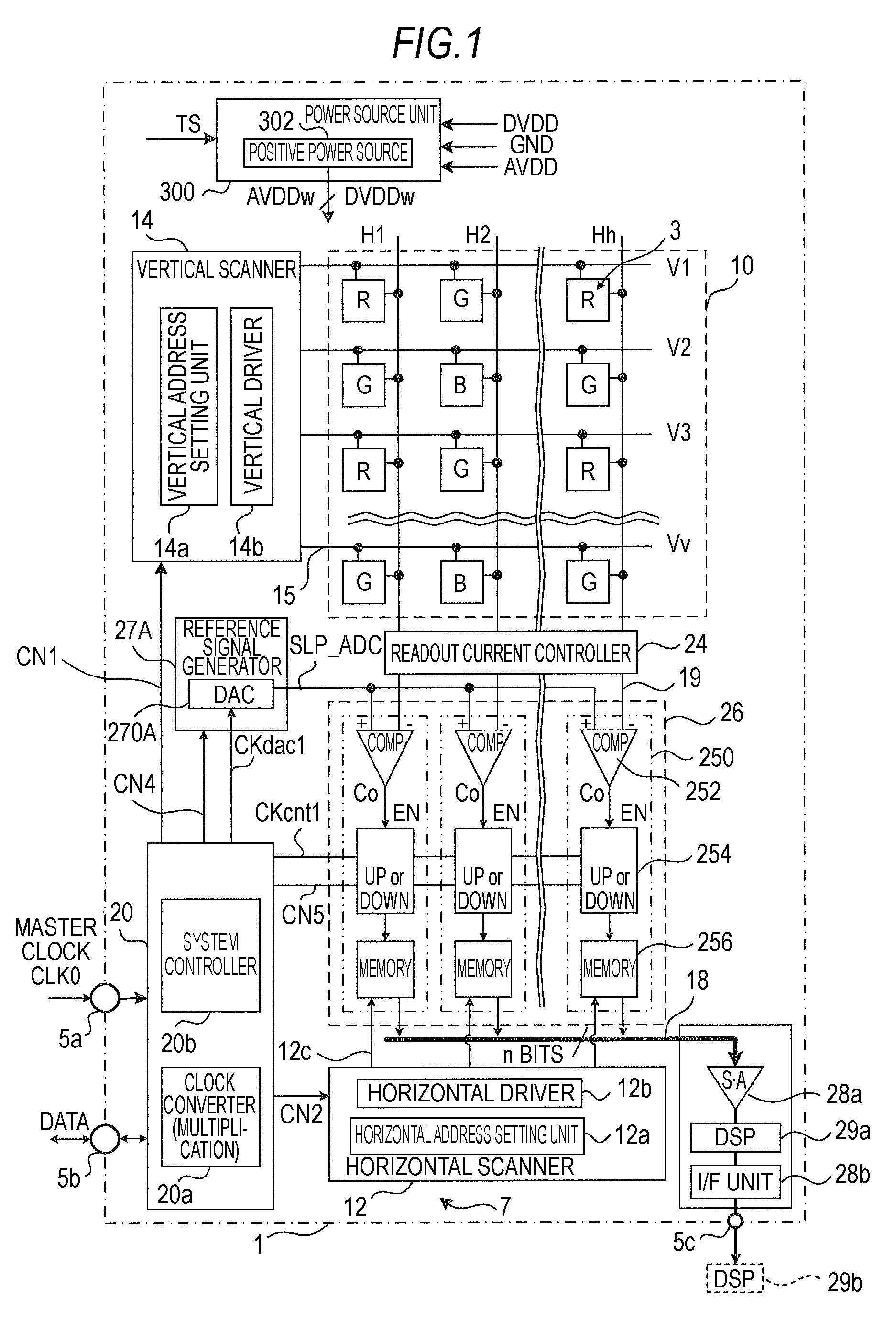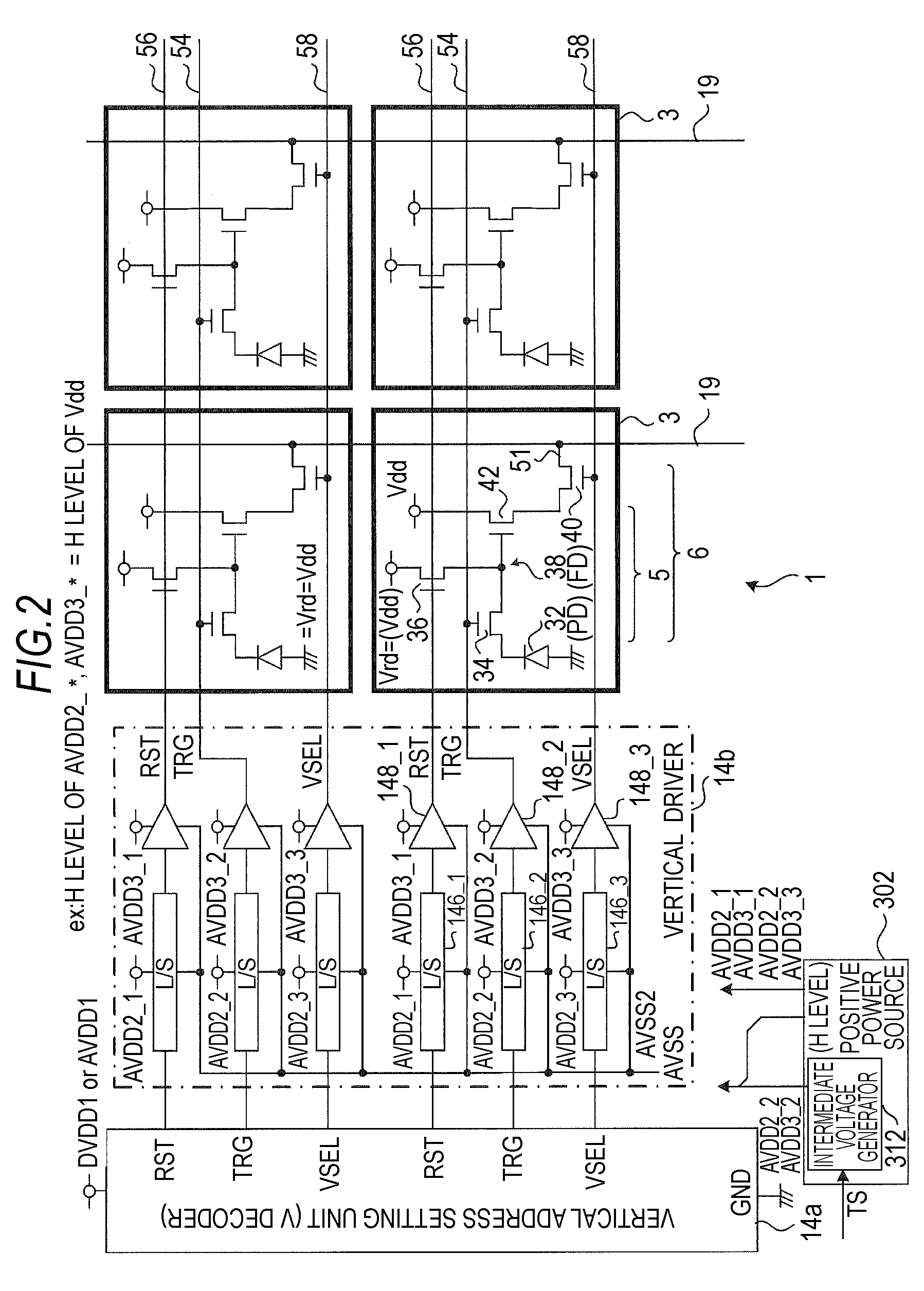Solid-state imaging device, imaging apparatus, pixel driving voltage adjustment apparatus, and pixel driving voltage adjustment method
a technology of pixel driving voltage and imaging device, which is applied in the direction of color television details, television system details, television systems, etc., can solve problems such as noise generation
- Summary
- Abstract
- Description
- Claims
- Application Information
AI Technical Summary
Benefits of technology
Problems solved by technology
Method used
Image
Examples
verification experiment
[Description of Verification Experiment]
[0097]FIG. 3B shows the driving timing of intermediate transfer and complete transfer in the verification experiment. The horizontal axis represents the time. A shutter time (charge accumulation time) of the complete transfer is Tlsh, a readout time of the complete transfer is Tl, a shutter time (charge accumulation time) of the intermediate transfer is Tssh, and a readout time of the intermediate transfer is Ts. The vertical axis represents the number of output electrons (charge amount). The number of saturated electrons (saturated charge amount) is Qs, the number of retained electrons by the intermediate transfer (intermediate retained charge amount) is Qm, the number of electrons to be read by the intermediate transfer (intermediate transfer charge amount) is Qn, and the number of electrons to be read by the complete transfer (complete transfer charge amount) is Ql.
[0098]The accumulation time ratio Tratio of the intermediate transfer charge...
first example
[0132]FIGS. 7A to 7D are diagrams illustrating the second embodiment (second example) of the scheme for adjustment of the intermediate voltage. FIG. 7A is a diagram showing a unit pixel 3 having a 3-TR structure to which the second embodiment (second example) is applied. FIG. 7B is a timing chart illustrating the normal driving timing of the unit pixel 3 having the 3-TR structure shown in FIG. 7A. FIG. 7C is a diagram illustrating the relationship between an area identification signal for identifying a normal pixel area and a retained charge measurement area which are applied to the second embodiment (first example), and a pixel array unit. FIG. 7D is a timing chart illustrating the driving timing of the unit pixel 3 having the 3-TR structure shown in FIG. 7A according to the second embodiment (first example).
[0133]In the 3-TR structure, the vertical selection transistor 40 in the 4-TR structure is removed. The 3-TR structure is considered to have a feature in that the occupying are...
second example
[0149]FIGS. 8A to 8E are diagrams illustrating the second embodiment (second example) of the scheme for the adjustment of the intermediate voltage. FIG. 8A is a diagram showing a unit pixel 3 having a 4-TR structure to which the second embodiment (second example) is applied. The structure of the unit pixel 3 shown in FIG. 8A is the same as the structure of the unit pixel 3 shown in FIG. 2. FIG. 8B is a diagram showing a structure example of a power source unit 300 which is applied to the second embodiment (second example). FIG. 8C is a diagram illustrating the relationship between the area identification signal Ty for identifying the normal pixel area 10a and the retained charge measurement area 10c which are applied to the second embodiment (second example), the pixel array unit 10, and the pixel power sources Vdd and SELVDD. FIG. 8D is a timing chart illustrating the normal driving timing of the unit pixel 3 having the 4-TR structure shown in FIG. 8A. FIG. 8E is a timing chart ill...
PUM
 Login to View More
Login to View More Abstract
Description
Claims
Application Information
 Login to View More
Login to View More - R&D
- Intellectual Property
- Life Sciences
- Materials
- Tech Scout
- Unparalleled Data Quality
- Higher Quality Content
- 60% Fewer Hallucinations
Browse by: Latest US Patents, China's latest patents, Technical Efficacy Thesaurus, Application Domain, Technology Topic, Popular Technical Reports.
© 2025 PatSnap. All rights reserved.Legal|Privacy policy|Modern Slavery Act Transparency Statement|Sitemap|About US| Contact US: help@patsnap.com



